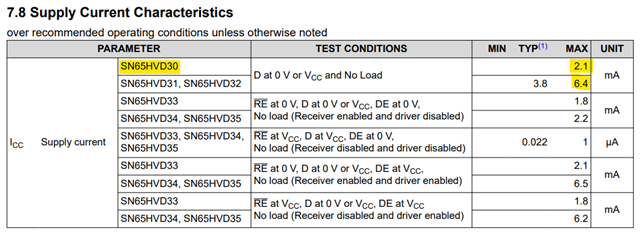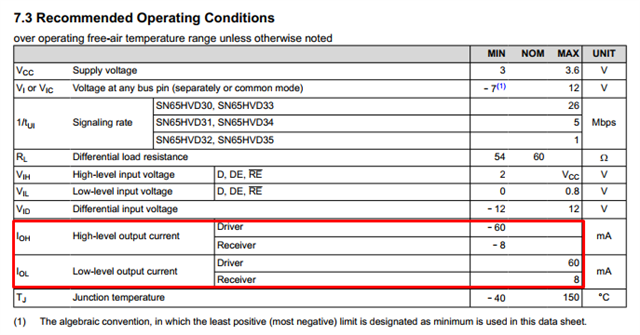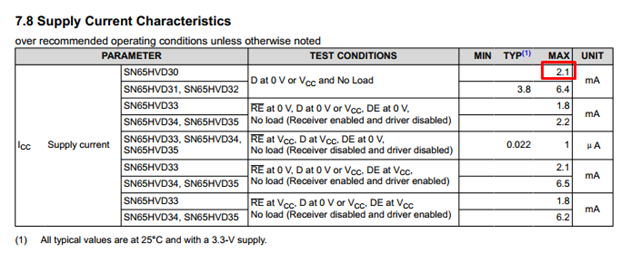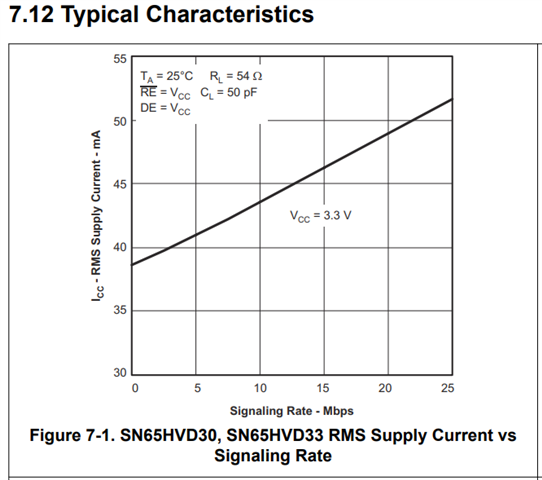Other Parts Discussed in Thread: THVD1451, SN75LBC179, THVD1512, SN751178
Tool/software:
Hi Team,
I would like to know the maximum operating current and standby current of the SN65HVD30DRG4. I couldn't find clear specifications in the datasheet. Could you please help me confirm the relevant parameters? Thank you.











